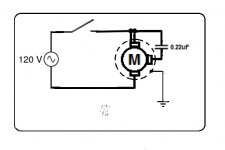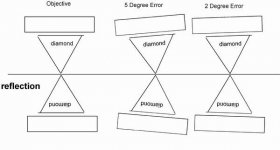Hi Stajo,
No worries on sanding things down too far. I just knock off the high points if they exist. You might be surprised at how many tabs have a slight cup.
Hi Salas,

-Chris
No worries on sanding things down too far. I just knock off the high points if they exist. You might be surprised at how many tabs have a slight cup.
Hi Salas,
Off to see John I see?Salas is the world leading expert in long threads.

-Chris
@alex....absolute knockout cases !!! where did you get those vu meters from ?
Thx
Hi ppap64,
Thank you for compliments. I got these enclosures from eBay guy located in Quebec Canada. He manufactured and sold them as raw box. He quit and no such boxes on sale now. VU meter and VU kit I acquired from Australian company:
http://www.jlmaudio.com/shop/jlm-34mm-vu-meter.html
http://www.jlmaudio.com/shop/vu2-stereo-vu-buffer-kit.html
I set VU for highest sensitivity and use them to set my azimuth. I play mono or stable mono 1kHz and I'm trying to see if cart reads same on L and R.
For boxes, try to contact the guy. His name is:
http://www.ebay.com/usr/minisemi_studio
Last edited:
Yep. Wrong. Don't read so much. Solder and measure. Learn
I still do not understand what should/might be done in order to minimized that "boom" sound from TT switch off. High or low pass filters constructed as RC, simply based on rotation of R and C when one of them in series to current and one between current and return. How to implement that for our needs?
One way is as Andrew advised, to use 0.1uF and 100R in series between L and N close to switch.
Did not test that yet, but I will..
Other way is to use that tandem across the switch, but to lower C to 0.047uF and to increase R to ?, in order to lower switch bypass current that "anger" my sensitive to low current motor.
Any corrections or other ideas?
Hi Alex,
Try placing a 150V Metal Oxide Varistor (MOV) across the primary of the power transformer. It will clamp the voltage across the primary (and therefore the switch contacts) to a lower level. Without the arc, the noise should be lower and the switch contacts will last a lot longer.
Side benefit. If you have a lightning strike or surge voltage, the MOV will help to clamp that spike to safer levels. Note that a fuse is required in it's normal place because the MOV sometimes protects by shorting out.
I used to use the 130 V MOVs, but with our mains voltages creeping up you should go with the 150 volt rated ones. Remember to solder this part directly across the transformer primary wires. The fuse and power switch are wired in away from the transformer, closer to the power line.
-Chris
Try placing a 150V Metal Oxide Varistor (MOV) across the primary of the power transformer. It will clamp the voltage across the primary (and therefore the switch contacts) to a lower level. Without the arc, the noise should be lower and the switch contacts will last a lot longer.
Side benefit. If you have a lightning strike or surge voltage, the MOV will help to clamp that spike to safer levels. Note that a fuse is required in it's normal place because the MOV sometimes protects by shorting out.
I used to use the 130 V MOVs, but with our mains voltages creeping up you should go with the 150 volt rated ones. Remember to solder this part directly across the transformer primary wires. The fuse and power switch are wired in away from the transformer, closer to the power line.
-Chris
Hi ppap64,
I set VU for highest sensitivity and use them to set my azimuth. I play mono or stable mono 1kHz and I'm trying to see if cart reads same on L and R.
It' s not so easy to set azimuth. Have a look here: That Crazy Little Thing Called "Azimuth" Part 1 | Analog Planet
Also for the rest of the world with 220V mains, better use 300V MOVs.
The cap allows AC through to your motor. So you may hear the motor make noises as appliances turn on and off on your grid. Furthermore, this movement will occur while the motor is stationary and may cause faster wear, because the protective oil film that develops during movement is not present.
I agree with the suggestion of MOVs.
I agree with the suggestion of MOVs.
JLM Audio Shop
JLM Audio Shop
I set VU for highest sensitivity and use them to set my azimuth. I play mono or stable mono 1kHz and I'm trying to see if cart reads same on L and R.
[/url]
Would you please explain wht you mean by azimuth ?
Were did you connect the vu meters in the folded ?
A schematic would be perfect
in the UK where we have a nominal 240Vac with a maximum of 253Vac (the over the whole of the EU) we use 275Vac MOVs and VDRsIt' s not so easy to set azimuth. Have a look here: That Crazy Little Thing Called "Azimuth" Part 1 | Analog Planet
Also for the rest of the world with 220V mains, better use 300V MOVs.
Andrew, my compliments and you was absolutely right. It works like a champ! I teased it during listening of my records during last 3 hours and I triggered off switch about 10 times (shortly after start and longer time waiting after LP side swap). Absolutely quite!!! No any impact to the motor actions either. At least, I did not notice about any...
So, 0.1uF X1 Rifa and carbon AB 1W 100R across L and N resolved my switch "boom" issue during power-off action.
Did not test MOVs, since I'm very satisfy with RC now.
Thank you a lot.
Alex
Sent from my iPhone using Tapatalk
So, 0.1uF X1 Rifa and carbon AB 1W 100R across L and N resolved my switch "boom" issue during power-off action.
Did not test MOVs, since I'm very satisfy with RC now.
Thank you a lot.
Alex
Sent from my iPhone using Tapatalk
Last edited:
- Home
- Source & Line
- Analogue Source
- Simplistic NJFET RIAA


